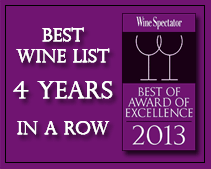Surprisingly enough Cabernet Sauvignon is not one of the oldest wine grape varieties in the world.
March 20, 2011
Surprisingly enough Cabernet Sauvignon is not one of the oldest wine grape varieties in the world. Professor Carole Meredith from the University of California at Davis was searching for the origins on Zinfandel. She found another unexpected relationship showing Cabernet Franc and Sauvignon Blanc to be Cabernet Sauvignon’s parents. Professor Meredith also established Cabernet Sauvignon to be less than 600 years old, a relative newcomer in the wine grape world. The oldest recorded reference to Cabernet Sauvignon comes from the 18th Century and Chateau Mouton. Baron de Brane ripped up the white varieties and planted a red variety called Vidure. Vidure comes from the French words Vigne Dure or hardy vine in reference to the tough nature of Cabernet Sauvignon. The name’s still used today in some parts of the Bordeaux where over 50% of the Merdoc and Graves districts are planted to Cabernet Sauvignon. The massive spread of Cabernet Sauvignon came in the 1800′s when it was used to replant the phylloxera ravaged vineyards of Europe.
Other names that Cabernet Sauvignon has been or is known by include: Petit Cabernet, Petit Vidure and Vidure, and in Italy, Uva Francese.
Cabernet Sauvignon berries are small, spherical with black, thick and very tough skin. This toughness makes the grapes resistant to disease and able to withstand autumn rains. It’s a late season ripener. We’ll often be picking the Cabernet Sauvignon as late as May that is well and truly into autumn. This is a gamble for us in Gippsland as the winter rains can ruin a spectacular crop, but thankfully this doesn’t happen often.
Bunches are large with average bunch weights up around 130g. Many of the colder Australian wine regions are pulling out their Cabernet Sauvignon vines or grafting them over to earlier ripening varieties as they can’t consistently ripen Cabernet Sauvignon.
Unripe Cabernet Sauvignon will produce wine having green, grassy, capsicum flavours, not the rich ripe berry flavours we love a good Cabernet Sauvignon for. The vines themselves are vigorous and do best in well-drained soils. All vines do their best in well drained soils, but Cabernet Sauvignon will not survive in poorly drained soils. The small berries have a high pip and skin to pulp ratio and if not treated gently during the early winemaking process can give very harsh and tannic wines.
Cabernet Sauvignon is often blended with other varieties to soften it. Adding Merlot or Cabernet Franc fills in the middle palate and gives a soft fruit finish. Adding Shiraz gives a wonderful fullbodied wine with lots of fruit berry flavours and spicy pepper at the back of the palate. Sangiovese is often added in Tuscany to produce a unique blend and some Malbec and Petite Verdot seem to regularly crop up as blends. The trend is turning back towards more straight Cabernet Sauvignons. The blends are easier to drink and quicker to mature than straight Cabernet Sauvignon, but they lack the complexity that a good Cabernet Sauvignon has on its own.
And Cabernet Sauvignon loves oak. Lots of tannins and often high alcohol contents react well to slow wood maturation. Cabernet Sauvignon can be aged in new oak for anywhere up to a year to produce spectacular results. Try this with a Chardonnay and you’ll end up with lots of oak and very little grape flavour.
The earliest recorded appearance of Cabernet Sauvignon in Australia is in 1820. The Macarthur’s at ‘Camden Park’ vineyard, enlarged their Camden estate with the first commercial plantings in the area. Varieties grown include Pineau Gris, Frontignac, Gouais, Verdelho, Cabernet Sauvignon, Riesling, Grenache and Mataro. In 2001 there were 28,609 hectares of Cabernet Sauvignon planted in Australia. By contrast the most widely planted red grape variety in Australia was Shiraz accounting for 33,676 hectares. If you consider that the total area planted to red wine grapes in Australia at that time was 90,933 hectares, there’s a lot of Cabernet Sauvignon out there.
Source: http://www.uncork.biz/tidbits14.htm
Foodies and wine lovers travel north from Manila to wine and dine at Philippines’ best fine dining restaurant in Pampanga Clark Freeport worth the 60-minutes drive for a memorable evening of good food with vintage wine at Yats Restaurant & Wine Bar
This fine dining restaurant is also famous for its low carbohydrates “low carb” dishes highly recommended for frequent diners who are on a low fat food and favor healthy food. This is a unique restaurant that can help frequent diners maintain a healthy diet and enjoy delicious fine dining cuisine at the same time. Vegetarian dishes are a specialty here also and so are “halal” cuisines also.
Favorites of frequent diners, foodies and wine lovers are steaks, Wagyu, Foie Gras, lobsters, venison, kangaroo loin, osso buco, veal chops, Kurabuto pork, escargots and a good selection of cheeses to enjoy with fine Vintage port and Sauternes. Cuban cigars such as Monte Cristo, Cohiba, Upmann, Partagas, Romeo Julieta and Trinidad are also available in the Magnum Room which is a wine bar and lounge for before and after dinner relaxation. A good selection of Armagnac, Cognac, Single Malt, Vodka and other liquor is served in addition to the wine vintage wines some served by the glass.
Recent opinion survey of frequent travelers heading north towards Subic and Clark Pampanga revealed that the number one most frequently visited fine dining restaurant in Pampanga is Yats Restaurant & Wine Bar located in Clark Philippines.
Inquiries and reservations
Restaurant@Yats-International.com
(045) 599-5600
0922-870-5178
0917-520-4401
Ask for Pedro and Rechell
Http://www.YatsRestaurant.com
Getting to this fine dining restaurant of Angeles City Clark Freeport Zone Pampanga Philippines
How to get to this fine-dining restaurant in Clark Philippines? Once you get to Clark Freeport, go straight until you hit Mimosa. After you enter Mimosa, stay on the left on Mimosa Drive, go past the Holiday Inn and Yats Restaurant (green top, independent 1-storey structure) is on your left. Just past the Yats Restaurant is the London Pub.
Yats Restaurant & Wine Bar
Mimosa Drive past Holiday Inn, Mimosa Leisure Estate,
Angeles City Clark Freeport Zone, Pampanga, Philippines 2023
Manila Sales Office
3003C East Tower, Phil Stock Exchange Center,
Exchange Rd Ortigas Metro Manila, Philippines 1605
(632) 637-5019 0917-520-4393 Rea or Chay
For assistance in hotel and resort booking in Clark, Philippines, log on to http://www.HotelClarkPhilippines.com
For assistance in locating a suitable venue for wedding reception, log on to
http://www.PhilippinesWeddingVenue.com









